North Santa Monica Boulevard Complete Street Reconstruction
Location
N. Santa Monica Blvd, between Wilshire Boulevard and Doheny Drive
City or County Responsible for Project
City of Beverly Hills
Category
Complete Streets Projects
Author
Michelle Tse
City of Beverly Hills, Public Works Department
345 Foothill Road
310-288-2821
Project Description
As one of the main thoroughfares through the City of Beverly Hills, N. Santa Monica Blvd. has helped define Beverly Hills since the 1930’s and remains the ‘Mother Road’ to Beverly Hills. This famous road had deteriorated, sidewalks cracked, sections of curb/gutter and drainage inlets damaged and/or missing from decades of use (50,000+ vehicles daily) requiring a full reconstruction from subbase to surface for 1.5 miles of roadway extending from Wilshire Blvd. to Doheny Drive. The project represents a Complete Street project that includes aesthetically pleasing native landscapes, environmentally efficient LED street lights, fiber optic conduit, new curbs, gutters, and sidewalks with new ADA approved access ramps, a widening of the roadway to accommodate a new 5’ wide bike lane, upgraded camera-operated traffic signalization system replacing traffic loops, and raised pedestrian crossings that provide traffic calming and safe crossing at ten unsignalized intersections heavily traveled by joggers, walkers, parents with strollers, and tourists. Prior to the crosswalks, pedestrians crossed at unmarked locations putting themselves at risk, impacted traffic flow, and increased the risk of car collisions. Environmentally-friendly improvements: Low impact grass bio-swales and drought tolerant plants to capture runoff before it enters the new storm drain system, reducing pollution to the adjacent, historic Beverly Gardens Park, the Santa Monica Bay and ocean and eliminating ponding that erodes the pavement, gutters, and sidewalks; LED lighting; and new trees. Pre-construction: Strategic planning by City departments and a Blue-Ribbon Committee comprised of 15 residents who conducted public outreach and sought project design input; a new Traffic and Parking Commission developed traffic mitigation plans to minimize impacts to users; and community engagement and scope review led to the segmentation of work, minimizing the impacts to traffic flow, businesses, and the community while reducing the construction schedule in half to 18 months. Public outreach meetings, flyers, a 24-hour hotline, social media, and electronic message boards near the construction areas and within neighboring City of West Hollywood were all used to update businesses, residents and travelers of construction and detours. Planning and coordination with the public, the City of West Hollywood, and the Los Angeles Metro Bus Transportation coupled with a strong commitment to public outreach were crucial to the success of this project. Project benefits: Subgrade stabilization (a sustainable pavement practice); unrestricted access to businesses minimized impacts to the businesses and their patrons during construction; reduced GHG emissions and air quality impacts; reduced stormwater pollution and silt to the Santa Monica Bay; multi-modal transportation facilities; improved pedestrian safety and traffic flow; reduced maintenance costs; and community involvement and support.

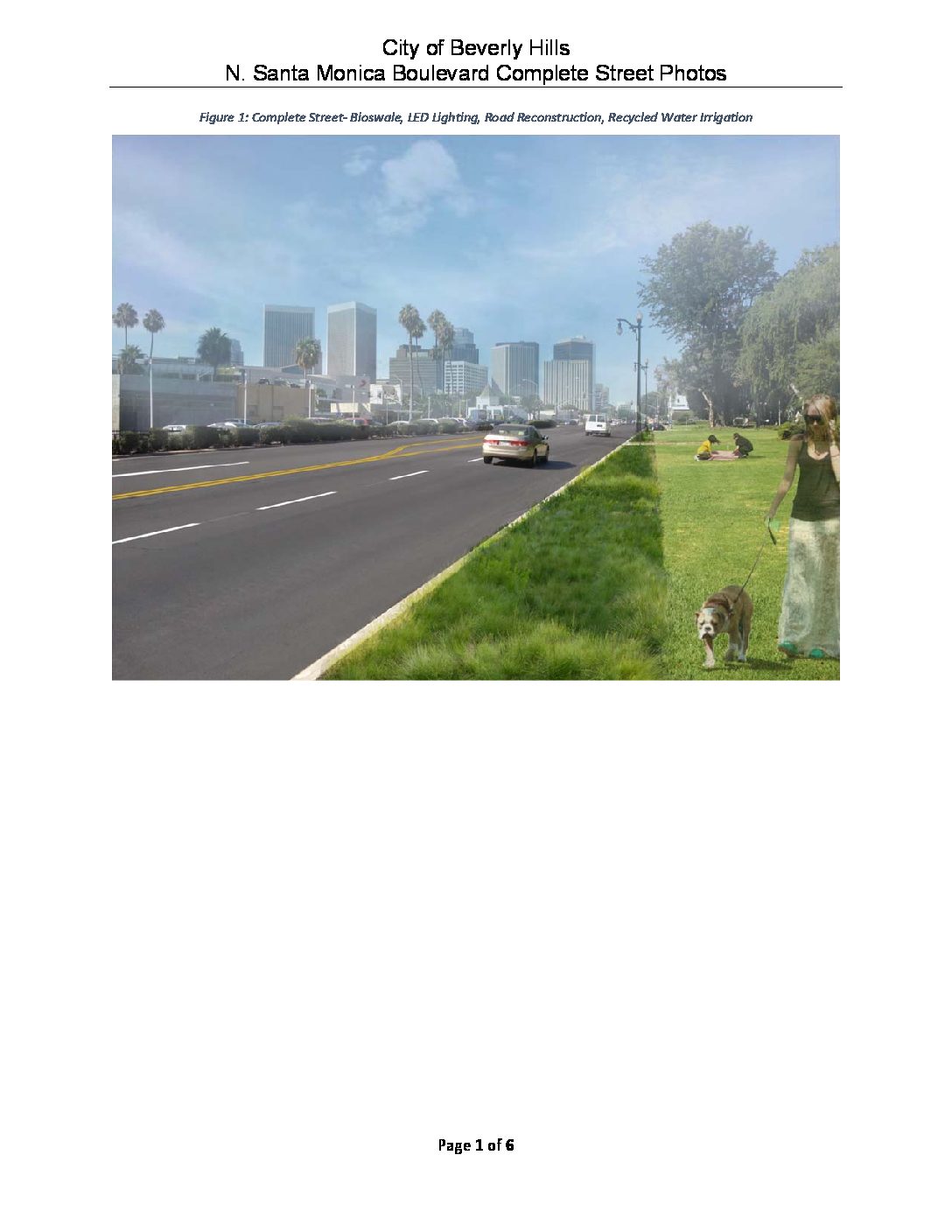
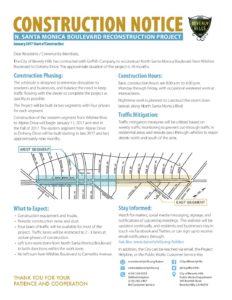
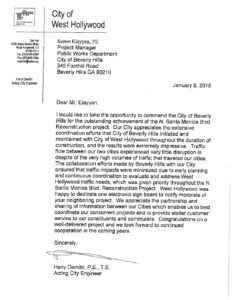
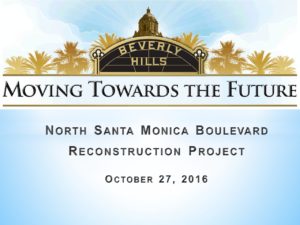
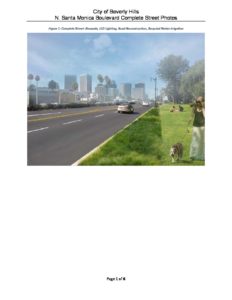
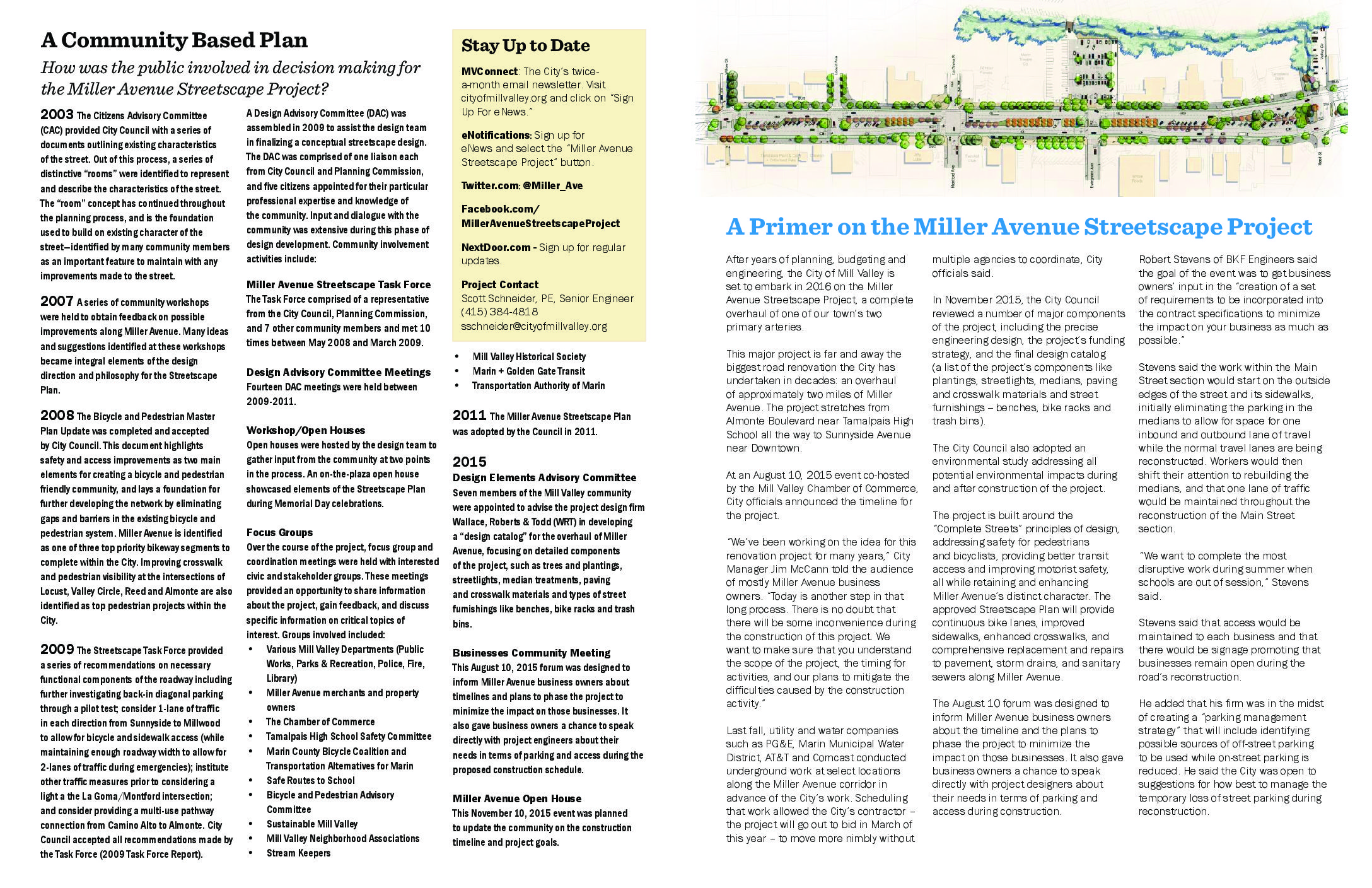
Add Comment